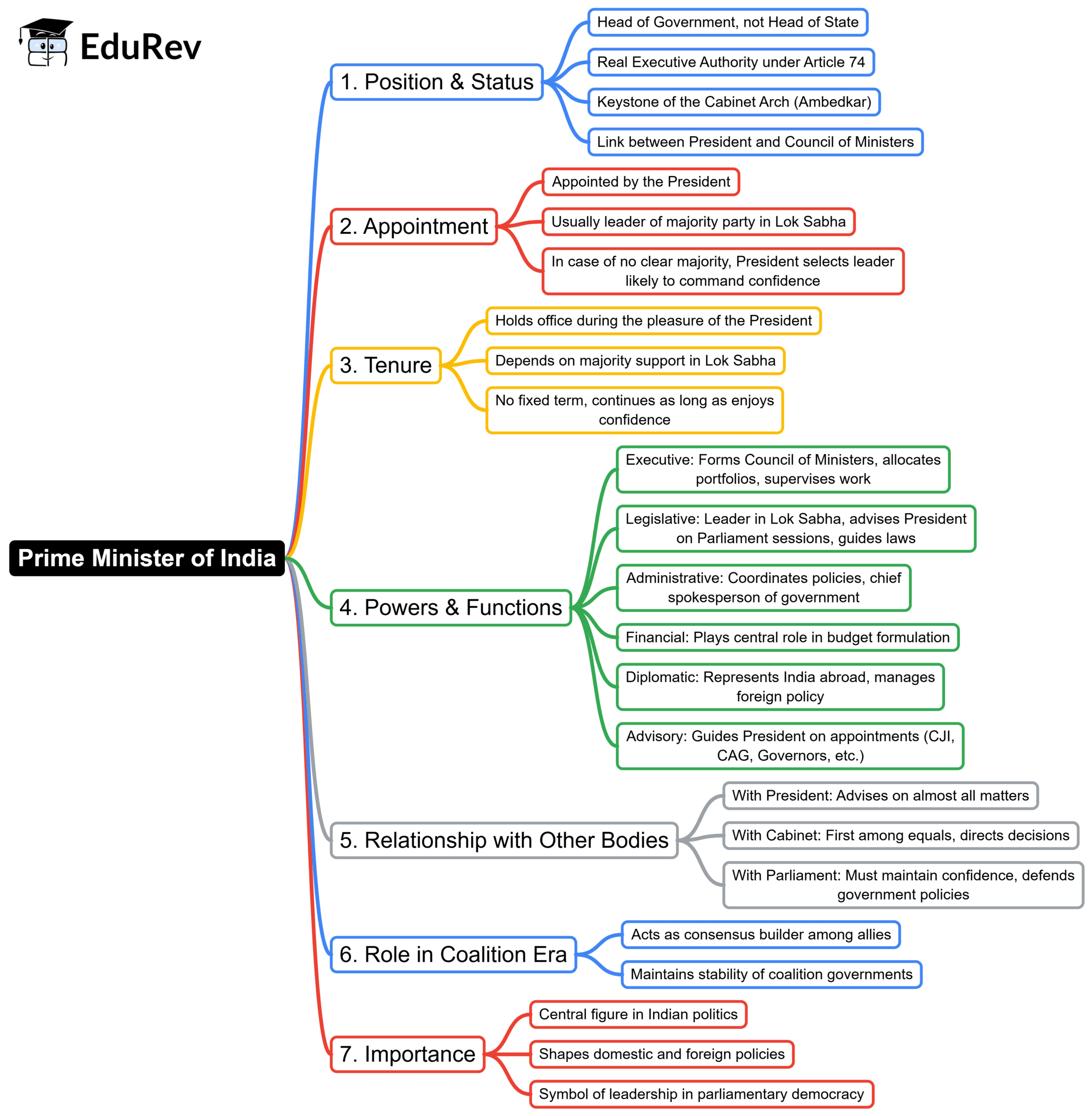UPSC Exam > UPSC Notes > Indian Polity for UPSC CSE > Mind Map: Prime Minister
Mind Map: Prime Minister | Indian Polity for UPSC CSE PDF Download

The document Mind Map: Prime Minister | Indian Polity for UPSC CSE is a part of the UPSC Course Indian Polity for UPSC CSE.
All you need of UPSC at this link: UPSC
|
142 videos|779 docs|202 tests
|
FAQs on Mind Map: Prime Minister - Indian Polity for UPSC CSE
| 1. What are the primary responsibilities of the Prime Minister in a parliamentary system? |  |
Ans. The Prime Minister serves as the head of government, overseeing the execution of laws and policies. Key responsibilities include leading the executive branch, setting government policies, making decisions on national issues, representing the country in international affairs, and guiding the legislative agenda in Parliament.
| 2. How is the Prime Minister appointed in a parliamentary democracy? |  |
Ans. The Prime Minister is typically appointed by the head of state, usually following elections where the political party or coalition with the majority in the legislature nominates their leader. The appointed Prime Minister must maintain the confidence of the majority of the members of Parliament to stay in office.
| 3. What role does the Prime Minister play in the legislative process? |  |
Ans. The Prime Minister plays a crucial role in the legislative process by proposing laws and policies, setting the agenda for parliamentary sessions, and ensuring that the government's legislative proposals are debated and passed. They work closely with other ministers and party members to secure support for their initiatives.
| 4. What are the qualifications required to become Prime Minister? |  |
Ans. To become Prime Minister, a candidate typically needs to be a member of the legislature, usually at least 25 years old, and must possess the ability to command the confidence of the majority in Parliament. Political experience and leadership skills are also essential for effectively managing the government.
| 5. Can the Prime Minister be removed from office, and if so, how? |  |
Ans. Yes, the Prime Minister can be removed from office through a vote of no confidence in Parliament. If a majority of members vote against the Prime Minister, they must resign. Additionally, the Prime Minister may also resign voluntarily or be dismissed by the head of state under certain constitutional circumstances.
Related Searches





















